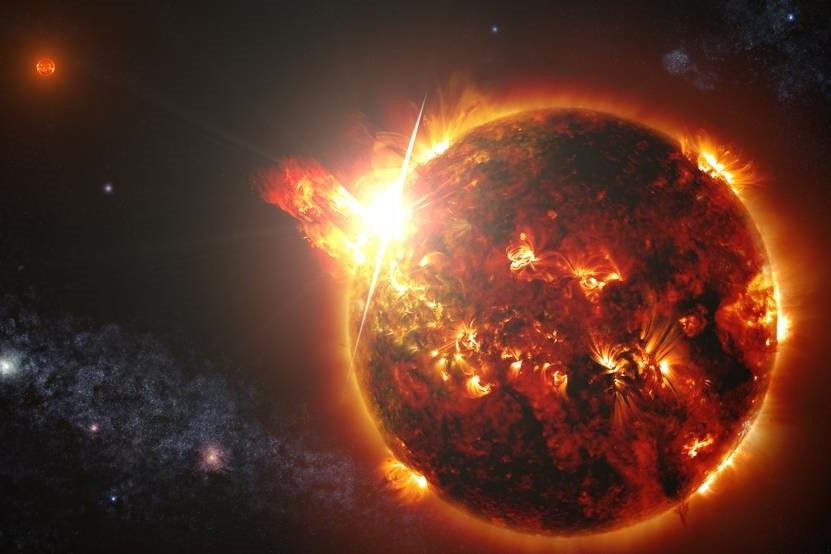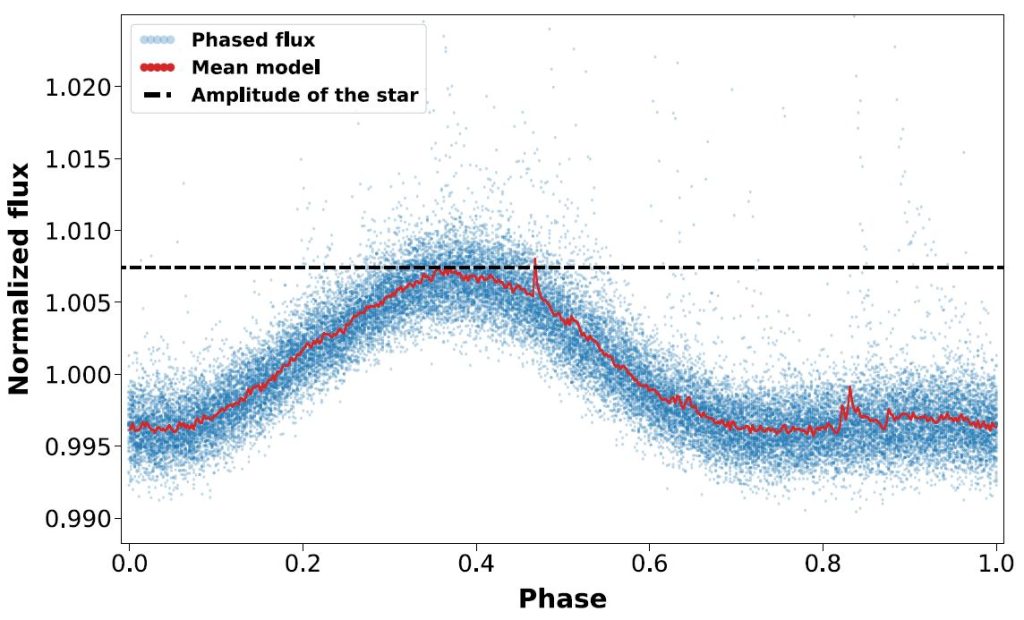
Starspot Modeling and Flare Analysis
Thanks to modern satellite observatories we discover nowadays that a large part of stars in our Galaxy, just like the Sun, generate flares. A great deal of data on this topic had been gathered by the Kepler mission, and today similar results are delivered to us by the TESS mission. Usually however we discover stellar flares clearly stronger than sun flares. Does that therefore mean that there are no weaker stellar flares? We expect that they do in fact happen, and quite often at that, but due to long distances to the stars we are unable to detect them.
In the case of weaker phenomena a very big challenge is distinguishing natural, slow changes of a star’s brightness from short-term flares. For strong phenomena it is not very troublesome, but for weaker ones it is. In order to detect them we need to have a reliable model of calm changes of a given star’s light. In our Institute we have devised a way to settle this matter for stars that change their light due to spots present on them. A novel code for modeling the distribution of spots on a given star, BASSMAN (Best rAndom StarSpots Model cAlculatioN), has been developed. By determining the distribution of spots on a rotating star we are able to improve the detection of its flare using our local WARPFINDER (Wrocław AlgoRithm Prepared For detectINg anD analyzing stEllar flaRes) code. We have tested this procedure on three stars. The increase of the number of detected flares may amount to as much as 30%. The energy span of those phenomena is large, from 100 times smaller than strong sun flares to 100 times bigger. The three stars that we have examined in this way turn out to be some of the most active stars in the TESS observation base.

Figure: The phased light curve of GJ 1243 from all the TESS observations (blue dots), the mean light curve from all the phased light curves (red curve), and the estimated maximal amplitude of GJ 1243 (black dashed line). Source: https://doi.org/10.3847/1538-4357/ac7ab3
The results of studies carried out by Kamil Bicz, Robert Falewicz, Małgorzata Pietras, Marek Siarkowski, and Paweł Preś have been published in the prestigious The Astrophysical Journal and are available to the public at https://doi.org/10.3847/1538-4357/ac7ab3
